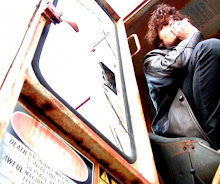
The tree house phenomenon is perhaps easily explained with children: as a representation of the approaching teen angst, and desire for independence and rebellion. The tree house is the child’s imagination trying to define these feelings and hormones beginning to take precedence. Readying them for the day when they will build their own nest, raise their own family. Only by this time, the romance of this fantasy may be slightly dulled down, and there aren’t likely to be any water slides.
As the child reaches adulthood new places and activities replace the escapism associated with the tree home, some healthier than others. Whether it be an addiction to recreational or pharmaceutical drugs, a book club, a rigid stamp collection, or taking the form of a place, perhaps the golf course, the tool shed, or the garden. These are the adolescent substitutes for the freedom we once attributed to the tree house. They are our socially acceptable forms of escapism from the often mundane world of adults.
But, alas, the wooden home is not forever lost on adults. Fully functioning tree homes are appearing throughout the world, from custom built residences in Switzerland, to bamboo tree suites at balmy resorts, (wo)man has reclaimed the tree house. There are a number of custom tree cabin companies out there including La Cabane Perchee who has built over 220 worldwide, and claims to do so without embedding a single nail in the living bark. Then there’s the UK based Blue Forest who not only builds sustainable, luxury tree houses, but is also pioneering the eco-classroom. Referred to as an Environmental Education Facility, these classrooms are entirely self-sustainable, “serviced entirely by solar energy, a revolutionary rainwater harvesting system and composting toilets.”

This is not an anomaly within the UK, in fact they have set a national goal to have all schools sustainable by 2020. The term ‘sustainable’ of course, is a fairly vague one, and the Department for Children, Schools and Families loosely defines a sustainable school as “...guided by the principle of care: care for oneself, care for each other and care for the environment." The point is, they’re not only acknowledging our near hysteric consumption tendencies, but actually doing something about it. At the root of all social change is education, and the most effective place to start, is with the children. Check out this video to see one of the ways this eco-conscious education is coming into practice, or for a broader scope.

The tree house phenomenon turned out to be much more than I fathomed. I came into this with the intention of concluding that the tree house is an ironic, contradictory symbol. The tree house represents the child’s rebellion against their parents, ultimately seeking independence, and fulfilling their wildest dreams of being an adult, and being privy to all of those (seemingly) wonderful rights. While for the parent, or more accurately, the adult, the tree house represents youth, and escape from all of the things that inherently make us adults. A return to innocence. I had no idea when I started writing tonight (err.. this morning?) that the symbology of the tree house would be a trinity, including a symbol of hope, of sustainability, of an environmentally conscious, and active society. We need to start at the root, which leads up the tree, to the house, then the child… The future.
Not to say it’s too late for us of course, that’s just a convenient excuse, and an entirely different story.


No comments:
Post a Comment